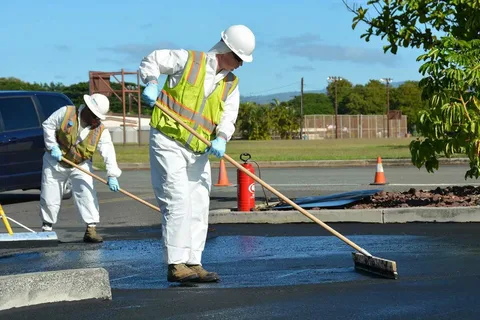Sealcoating is a vital process that shields your asphalt from wear and tear, weather damage, and extends its lifespan. However, to get the most out of this investment, what you do after the sealcoating service is just as important as the service itself. By following the right techniques, you can ensure the sealant cures properly, maintains its protective qualities, and enhances the surface’s appearance. From allowing adequate curing time to implementing careful maintenance practices, these post-sealcoating steps are key to preserving your asphalt’s durability and aesthetic appeal. See the best practices to follow immediately after sealcoating to protect your asphalt and keep it looking pristine for years to come.
What is Proper Curing?
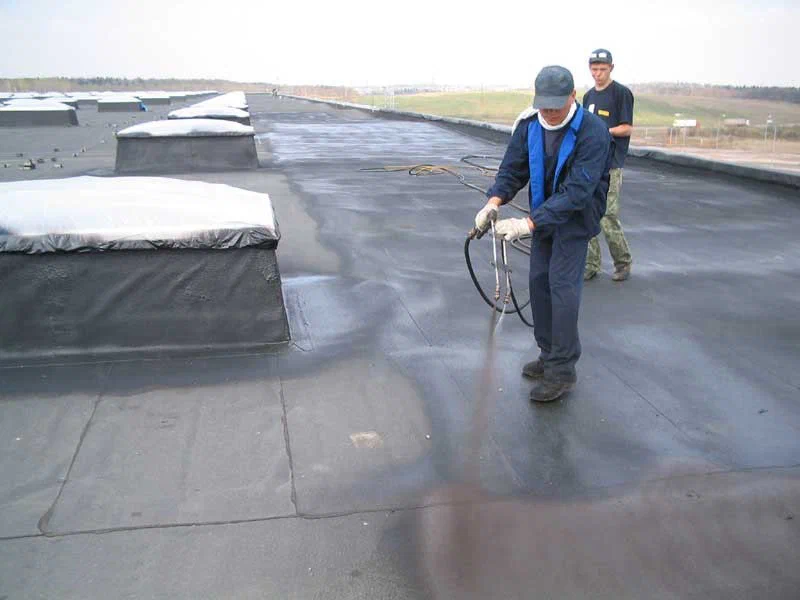
Proper curing refers to the process where a freshly applied sealcoat or surface treatment is allowed to dry and harden to form a strong, protective layer over asphalt. This phase is crucial because it ensures that the sealant fully adheres to the surface, providing the intended protection against weather, traffic, and environmental damage.
During curing, it’s important to keep the surface free from traffic, water, and debris. Typically, curing takes 24 to 48 hours, depending on weather conditions like temperature and humidity. Rushing this process can lead to weak spots, premature wear, and a less effective sealcoat. Proper curing is essential to maximize the longevity and effectiveness of the sealcoating, ensuring the asphalt remains durable and visually appealing.
Best Techniques After Sealcoating Services
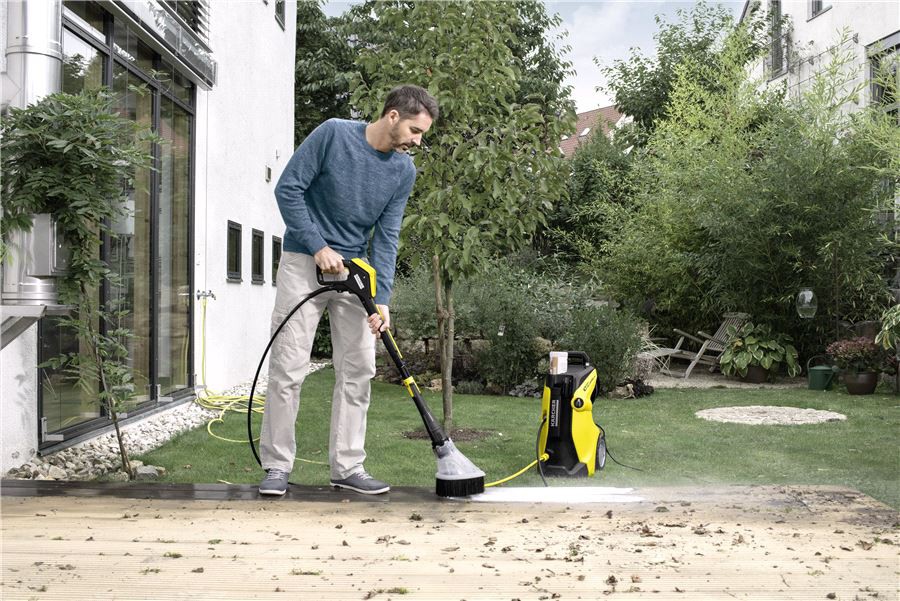
Sealcoating is an essential maintenance step that prolongs the life of asphalt surfaces, enhancing both their appearance and durability. However, to reap the full benefits of sealcoating, it’s crucial to follow certain post-service techniques. These steps ensure that the sealant cures properly and that your asphalt surface remains in optimal condition for as long as possible.
Avoiding Water Contact on the Sealed Surface
Water is one of the most significant threats to a freshly sealcoated surface. Whether it’s from rain or sprinklers, water exposure before the sealant has fully cured can lead to uneven drying and potential damage to the sealcoat. To prevent this, monitor the weather forecast before scheduling your sealcoating service. If rain is predicted, it’s advisable to delay the process. Additionally, ensure that sprinklers are turned off and any potential sources of water are redirected away from the asphalt.
How Water Affects the Sealcoating Process
Water exposure during the early stages of curing can cause several problems. It may create streaks where the sealcoat is washed away in some areas but remains in others, leading to an uneven appearance. This not only affects the look of the asphalt but also leaves certain areas less protected, making them more vulnerable to damage from UV rays, chemicals, and wear from traffic.
Timing Sealcoating with Weather Conditions
To avoid the risk of water damage, it’s crucial to schedule sealcoating when dry weather is expected. Ideally, there should be no rain in the forecast for at least 24 to 48 hours after the application. This window allows the sealcoat to dry and harden sufficiently before being exposed to water. In cooler or more humid conditions, the drying time may be longer, so it’s important to consider the local climate when planning the service.
Controlling Other Water Sources
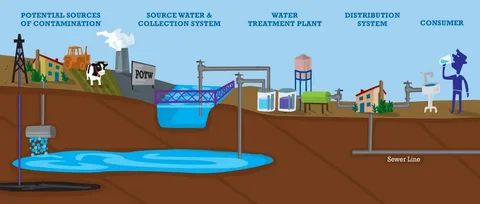
Beyond rain, other sources of water can also affect a freshly sealed surface. Sprinklers, hoses, or even runoff from surrounding areas can introduce water during the critical curing period. To prevent this, turn off sprinklers and irrigation systems that might spray water onto the asphalt. If your property has areas prone to water pooling or runoff, take steps to redirect or manage this water flow temporarily.
Ensuring Proper Curing for Long-Term Benefits
By avoiding water contact during the curing period, you ensure that the sealcoat forms a strong, uniform layer. This proper curing process enhances the sealant’s ability to protect the asphalt from environmental damage, extending the surface’s lifespan and maintaining its appearance. In the long run, these precautions help maximize the effectiveness of the sealcoating, providing a durable and attractive asphalt surface.
Restricting Foot and Vehicle Traffic

It’s crucial to limit both foot and vehicle traffic on the newly sealed surface during the curing period. While the sealant may feel dry to the touch after a few hours, it still needs time to fully cure beneath the surface. Allowing vehicles, especially heavy ones, to drive on the surface too soon can compromise the sealant’s integrity. It’s recommended to block off the area with cones or tape to prevent accidental use.
Maintaining Optimal Temperature and Weather Conditions
Weather plays a significant role in the effectiveness of sealcoating. Ideally, the temperature should be above 50°F (10°C) and the weather dry for at least 24 hours after application. Cooler temperatures or high humidity can prolong the curing process, while extremely hot conditions can cause the sealant to dry too quickly, leading to cracking. Monitoring the weather conditions before and after the sealcoating process ensures that the sealant cures properly and adheres well to the asphalt.
Gentle Cleaning Practices Post-Sealcoating
After the sealant has cured, regular cleaning is essential to maintain the appearance and functionality of the asphalt. However, it’s important to use gentle cleaning methods to avoid damaging the new sealcoat. Sweeping the surface with a soft broom or using a leaf blower to remove debris is ideal. If you need to wash the asphalt, avoid high-pressure washing or harsh chemicals that can strip away the sealant. Instead, use mild soap and water with a gentle rinse.
Regular Monitoring for Signs of Wear
Even after sealcoating, it’s vital to regularly inspect the asphalt surface for signs of wear and tear. Cracks, oil stains, and other damages can still occur, and addressing these issues early can prevent them from worsening. Small cracks can be filled with crack sealant to prevent them from spreading, and oil stains should be cleaned promptly to avoid penetrating the sealcoat. Regular monitoring and maintenance can significantly extend the life of your asphalt surface.
Periodic Re-Application of Sealcoat
Sealcoating is not a one-time solution; it’s a maintenance practice that should be repeated every 2 to 3 years, depending on the traffic and environmental conditions the asphalt endures. Reapplying the sealcoat ensures that the surface remains protected from UV rays, water, and chemicals that can cause damage over time. Keeping a regular sealcoating schedule is one of the best ways to preserve the longevity and appearance of your asphalt.
Proper Drainage Maintenance

Good drainage is essential to prevent water from pooling on the asphalt surface, which can cause damage over time. After sealcoating, check that all drainage systems, such as gutters, downspouts, and slopes, are functioning properly. Make sure that water flows away from the asphalt and does not accumulate in any areas, as standing water can erode the sealant and lead to cracks.
Protecting the Edges of the Sealed Surface
The edges of the asphalt surface are particularly vulnerable to damage, especially from landscaping equipment, vehicles, and heavy foot traffic. After sealcoating, take extra care to protect these areas. Avoid using sharp tools or heavy equipment near the edges, and consider installing barriers or curbs to prevent vehicles from driving over them. Maintaining the integrity of the edges will help prevent the sealant from peeling away and ensure a uniform appearance.
Limiting Heavy Loads on the Surface
Even after the sealant has fully cured, it’s wise to avoid placing excessively heavy loads on the asphalt surface. Heavy machinery, dumpsters, or parked trucks can cause depressions or damage the sealcoat, especially if they remain stationary for long periods. If heavy equipment must be used, consider placing plywood or rubber mats underneath to distribute the weight and protect the surface.
Repainting and Re-Striping the Surface
If your asphalt surface includes painted lines or markings, such as in a parking lot, these will need to be reapplied after sealcoating. However, it’s important to wait until the sealant has fully cured before painting, usually a few days after the application. Re-striping the surface ensures that traffic flow is organized and that the asphalt remains functional and safe for use.
Applying Sealcoat in Optimal Conditions
Ensuring that the sealcoat is applied in the right conditions is just as important as the techniques you follow afterward. The surface should be clean, dry, and free of any debris before sealcoating begins. Any cracks or potholes should be repaired in advance to ensure a smooth, even application. Additionally, applying the sealcoat in layers allows for better penetration and a more durable finish.
Managing Environmental Factors

Environmental factors, such as tree roots and overhanging branches, can affect the longevity of your sealcoated surface. Roots can push up through the asphalt, causing cracks, while falling leaves and branches can stain or damage the sealant. After sealcoating, regularly trim trees and bushes near the asphalt to prevent these issues. Keeping the surrounding area clean and well-maintained will help protect your investment.
Using Sealant Compatible with the Climate
There are different sealants made for different temperatures, and it is very important to use the right type for your area. For example, areas with harsh winters might require a sealant that can withstand freezing and thawing cycles, while hot climates need a sealant that won’t soften in extreme heat. After sealcoating, consult with professionals about the best type of sealant for your specific environment to ensure long-lasting results.
Preventing Chemical Spills on the Surface
Chemicals, such as oil, gasoline, and de-icing agents, can be particularly harmful to a freshly sealcoated surface. These substances can break down the sealant and cause it to deteriorate more quickly. After sealcoating, it’s important to clean up any spills immediately and avoid using harsh chemicals on or near the asphalt. Consider using absorbent pads in areas where vehicles are parked to catch any leaks and protect the surface.
Enhancing Aesthetic Appeal with Landscaping
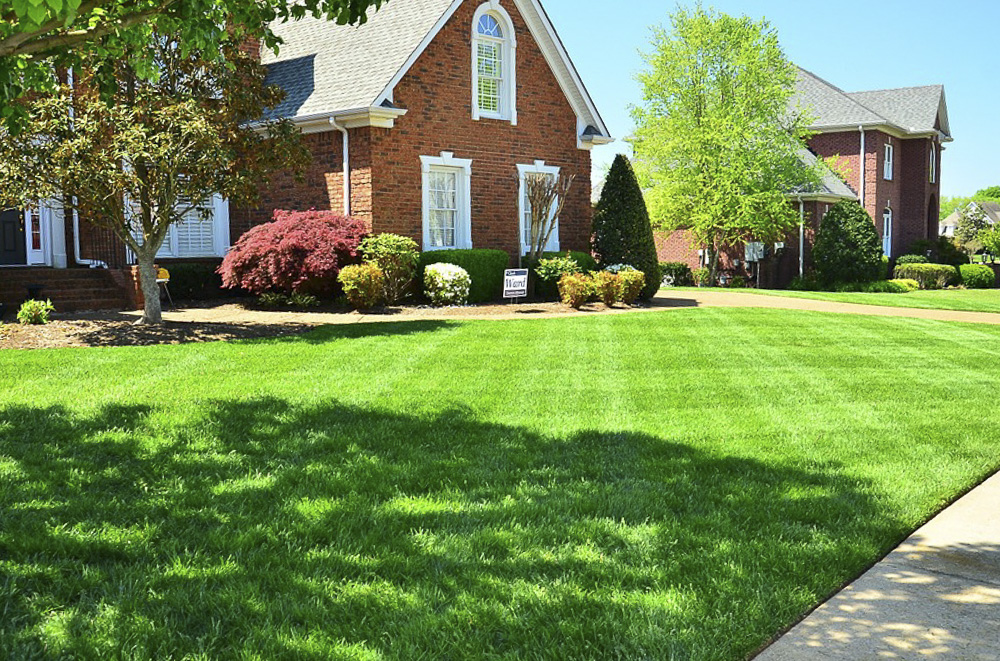
The landscaping around your asphalt driveway or path adds to its general look. After sealcoating, consider enhancing the look of your driveway or parking lot with well-maintained landscaping. Installing borders, planting flowers, and maintaining a tidy lawn can significantly boost the curb appeal of your property. Additionally, healthy landscaping helps prevent soil erosion and runoff, which can affect the integrity of the asphalt.
Conclusion
Sealcoating is a valuable investment that protects and prolongs the life of your asphalt surfaces. However, the success of this process largely depends on the techniques followed afterward. By understanding the importance of proper curing, avoiding water contact, restricting traffic, maintaining optimal weather conditions, and performing regular maintenance, you can ensure that your asphalt remains in excellent condition for years to come. Implementing these best practices will not only enhance the durability of your sealcoated surface but also preserve its aesthetic appeal, making it a wise investment in the long run.

